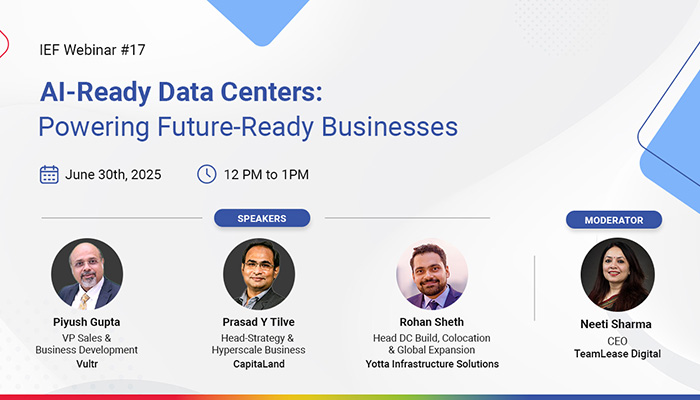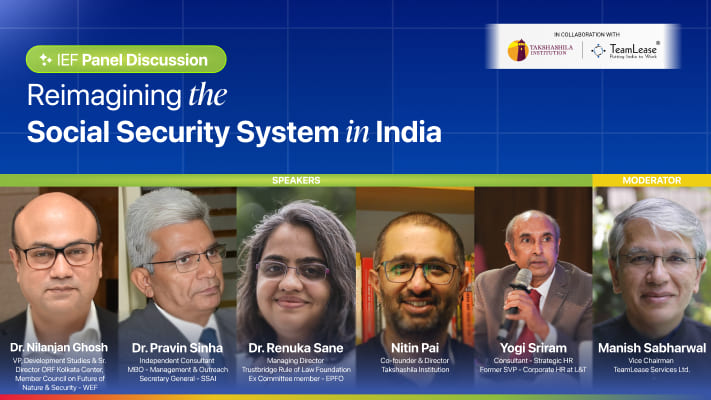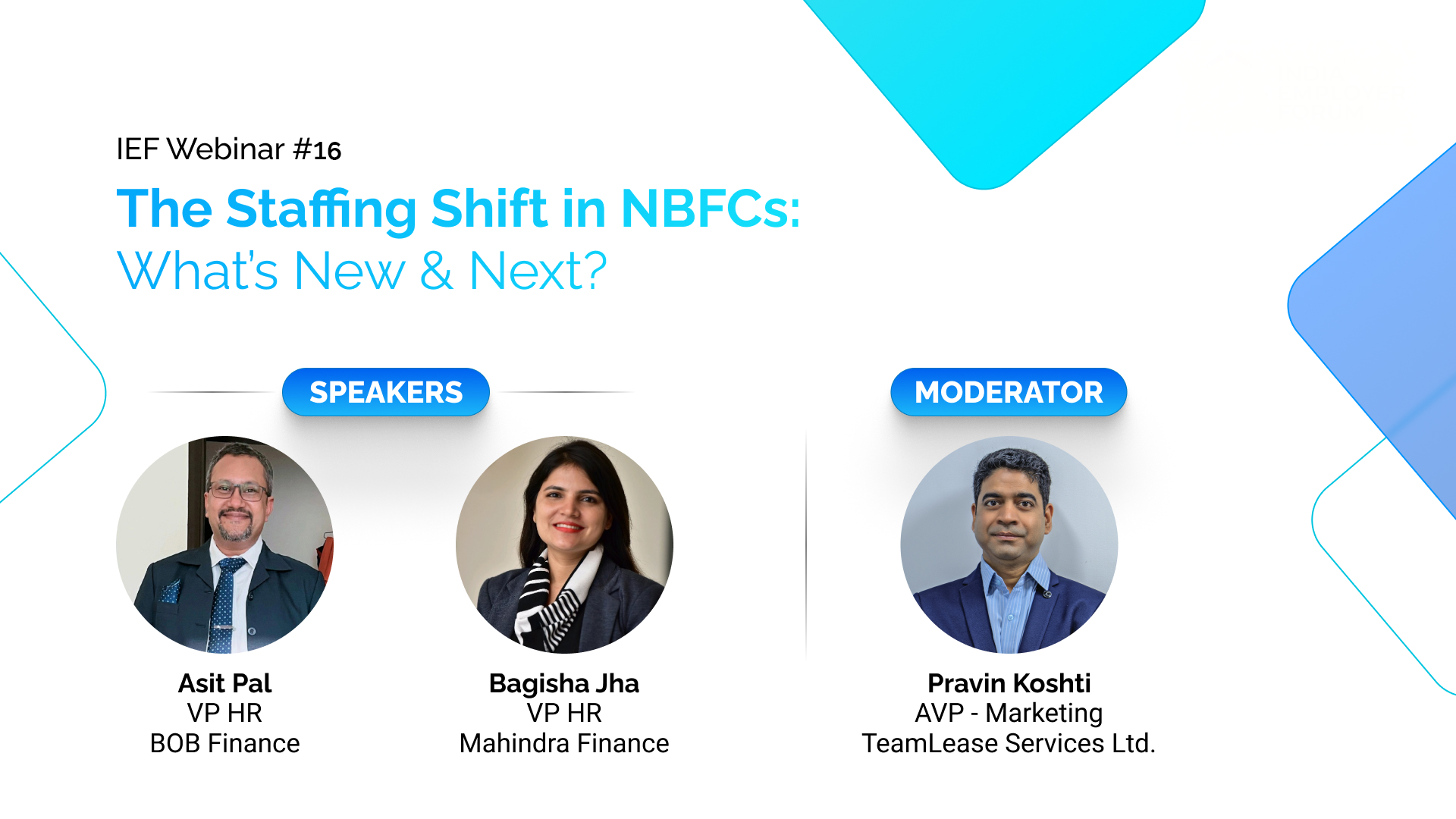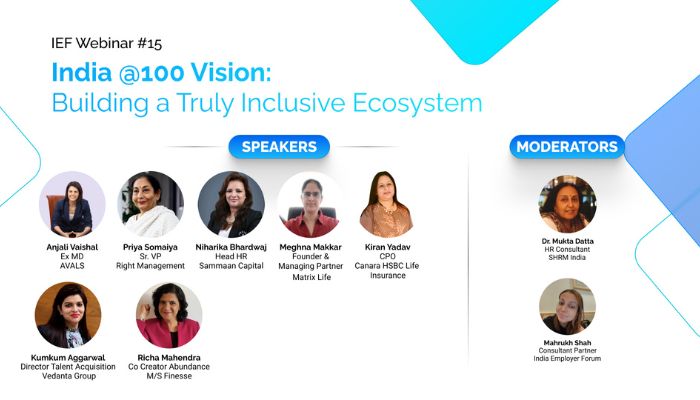Workforce Trends in the Manufacturing Industry: Challenges and Solutions
India’s manufacturing industry is at a pivotal juncture, marked by rapid technological advancements and robust market growth. The manufacturing sector contributes around 17-18% to India’s GDP, making it a key driver of the economy. However, this growth also brings new workforce trends and challenges such as high attrition rates and the need for new skill sets aligned with Industry 4.0.
In the closed-door webinar, eminent corporate leaders had a productive discussion on the workforce trends in manufacturing. The webinar had three eminent industry experts who shared their views on workforce optimisation and retention in the manufacturing sector. Prateek Sen, VP and Regional Business Head, TeamLease Services moderated the session.
When asked about the key factors behind the steady growth of the manufacturing sector, Varsha Motwani, Head Talent Management, Gulf Oil India, said, “Talking about India as a country, we are front-leading in the emerging economies of the world. So, while the GDP across the globe is projected at a lesser rate, we are still on a path to rising. About the automotive sector, which is more of where my experience is, we have a lot of PLI schemes by the government. We do have a lot of shifts towards sustainability, EVs coming in, and various schemes wherein we promote sustainability. Overall, our focus on ESG has been very pertinent over the last many years, and we see a lot of focus around sustainability, and CSR. This, coupled with growth and the kind of development that we are seeing, I think it all paves the way and makes a very strong case where we are talking about the growth in the manufacturing sector. And again, it is a very, very fast-paced field to be in, with the brick and mortars around.”
The second expert on the panel who spoke on the subject was Vinod Singh, Head-People Energy Process & Business Excellence, Galaxy Surfactants Limited. He said, “One thing, if you see, the India growth was talked about, but if you see the population growth and the country having more than 60% of the population in the category of 35 and below, and the way we have seen now, you know, women are also moving into the workforce, and the consumption pattern of this young crowd and their aspirations—I think that is the fundamental factor driving this growth. Second, I see that the way the government has come up with the ‘Make in India’ concept, a lot of things in the manufacturing sector started happening in India. For example, the defence sector—this is the first time in so many years that India has started exporting to other countries. And if you see, a number of companies have moved into the defence sector, and a lot of manufacturing has happened there. So, I see two very important factors—one is ‘Make in India,’ and the second is population growth, particularly the younger crowd, which is more than 65%, and their aspirations.”
The third expert on the panel was Shilpi Suman Pant, HR Leader, Becton, Dickinson and Company. She said, “India is really becoming an attractive destination, especially with respect to global investors. The FDI coming in indicates a very important factor—why FDI is coming to India in the first place. Our cost leadership and our strong inclination toward rapid adoption of technology play a key role. Whatever technology emerges globally, we are quick to adopt, fast to adapt to changes, and also replicate cost-effective models of implementation wherever possible. Not to mention, it’s not just the private sector but actually the government sector that is taking the lead in this space. Just a rhetorical question—how many of us have actually visited a bank for any service other than a loan facility in the last five years? Ever since COVID, demonetisation, or even the transformation of our toll plazas with smart tags, the government has been the torchbearer of this change.
The private sector is lagging, and we need to understand that the technology we adopt will help us become the cost leader globally. That is when we will become even more attractive. Right now, manufacturing contributes 17–18% of GDP, but to reach the 25% aspiration, we have a long journey ahead as a private sector. There must be synergy between the government and the private sector. While the government has introduced aggressive schemes and a strong intent for technological innovation, the private sector must align to accelerate this progress.”
View the entire session here: IEF Webinar #14 | Workforce trends in Manufacturing: Challenges & Solutions





